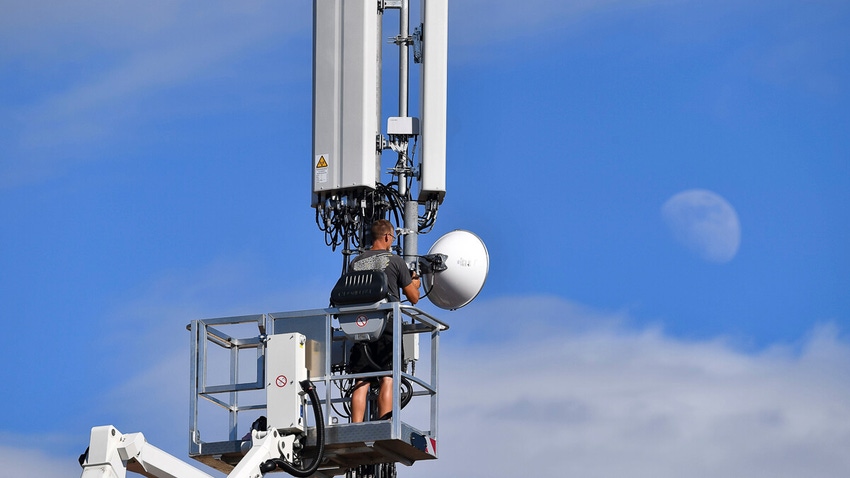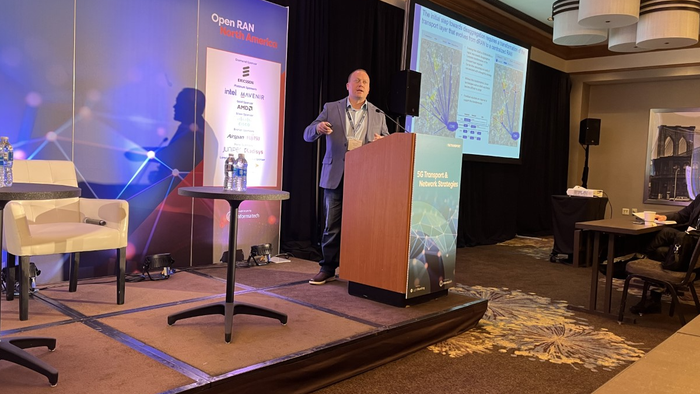The fits and starts of C-RAN lead to some deployments
After a decade of talk about centralized RAN, mobile operators are finally beginning to deploy it. UScellular leads the way, with Verizon, AT&T and DISH following more slowly.

NEW YORK CITY – Centralized RAN (C-RAN) has been a topic of discussion in the US wireless industry for close to a decade. Now, the technology is finally starting to see the light of day.
But that doesn't mean C-RAN is going to be the next big thing. Instead, it seems to be "another tool in the toolbox," as network engineers often like to say.
Vendors will need to support the technology, and some mobile customers may make use of it. But network operators probably aren't going to connect every cell site in their network to a centralized processing center.
The baseband hotel
Centralized RAN (radio access network) technology involves essentially lengthening the cable between a radio and its baseband processing unit so that several basebands can be physically located together. That allows several radios to be spread around a neighborhood or a town, with each connected to a baseband in the baseband "hotel."
Such an approach represents a significant change from traditional wireless network designs that put a radio on top of a cell tower and its baseband processing unit at the base of the tower.
According to C-RAN proponents, there are a variety of reasons to "pool" baseband units in a central location. First, it's potentially cheaper because those baseband computers can share the same power, connectivity and computing load. They can also be easier to fix and may be able to work together to coordinate faster speeds for end users.
However, there are limits to the promise of C-RAN. Due to the latency demands of wireless communications, radios can't be farther than about 10 miles away from their baseband processors. Plus, operators must find the space, power, permits and fronthaul (the connection between a radio and a baseband unit) necessary to build a baseband "hotel."
It can also be difficult for operators to find hotel locations that make both financial and geographic sense, particularly in dense urban areas where C-RAN thrives. Finally, any networking change invariably generates friction inside corporate structures that are used to the "traditional" way of doing things.
Centralization champions
Speaking here at Light Reading's 5G Transport & Networking Strategies event, Reggie Collette, a principal RAN engineer for UScellular, said his company recently finished a limited deployment of C-RAN technology that changed the company's outlook.
"We're accelerating our centralized deployments," he said.

Reggie Collette from UScellular discusses C-RAN at Light Reading's 5G Transport & Networking Strategies event.
(Source: Mike Dano/Light Reading)
Collette said UScellular, which counts roughly 5 million mobile customers across two dozen US states, now hopes to implement C-RAN across 10% of its network in 2023 and 20% in 2024. That timeline coincides with the company's midband 5G network buildout.
Some vendors are also C-RAN proponents. "It's working fine," said Vikas Khera, director of sales support for Ericsson. "I think we're trending more toward centralized RAN."
'Half art and half engineering'
The reasons for UScellular's accelerated timeline are clear, according to Collette: The company was able to offer customers a 10% to 50% increase in speeds, thanks to intersite coordination via C-RAN.
Collette also said UScellular managed to cut costs thanks to the shift from Ethernet to dark fiber for backhaul. The company deployed a 10-Gig circuit to its central RAN location, he added.
Deploying C-RAN is "half art and half engineering," Collette explained. That's because the company's RAN and network transport teams must work together on each deployment – a distinct change from the mostly separate workstreams they are used to. As a result, "these things take a great deal of time," he said.
But Collette said it's worth it, particularly as UScellular eyes a future of open RAN principles and virtualized network functions.
A step forward, a step back
Other operators are taking on C-RAN more slowly and seem wary of widespread deployments.
"The use cases have been narrowed down over the years," said Mark Watts, a member of Verizon's technical staff.
Watts explained that the absence of any one of the many items on a C-RAN deployment checklist – power, connectivity and so on – can squelch the deployment. He added that a C-RAN deployment in Verizon's network would likely require a 100-Gig backhaul connection, rather than the standard 10-Gig connection Verizon has installed at most of its 5G cell sites.
Watts noted that Verizon's early C-RAN deployments have focused on large public venues like sports stadiums. He also said that a step toward full-blown centralized RAN might involve "hubbing" a few sites together, such as a macro site combined with a rooftop deployment and a small cell.
Indeed, that's the parlance that AT&T network executives have used. They recently told Light Reading that C-RAN "hubbing" may improve the performance of the AT&T network and could be cheaper and more efficient to deploy. However, they did not provide details on the scale of their hubbing deployment.
Similarly, Dish Network's top network executive said the company has already deployed a C-RAN network design in its Dallas and Houston markets. But Dish's Dave Mayo said the company hasn't yet engaged in some of the advanced services supported by C-RAN, such as cell site coordination. He said Dish might pursue that technology as traffic increases on its 5G network.
It's worth noting that such comments come as operators finish the most expensive part of their big midband 5G network buildouts. Meaning, C-RAN doesn't seem to be playing a leading role in these deployments.
Related posts:
— Mike Dano, Editorial Director, 5G & Mobile Strategies, Light Reading | @mikeddano
About the Author(s)
You May Also Like




_International_Software_Products.jpeg?width=300&auto=webp&quality=80&disable=upscale)







